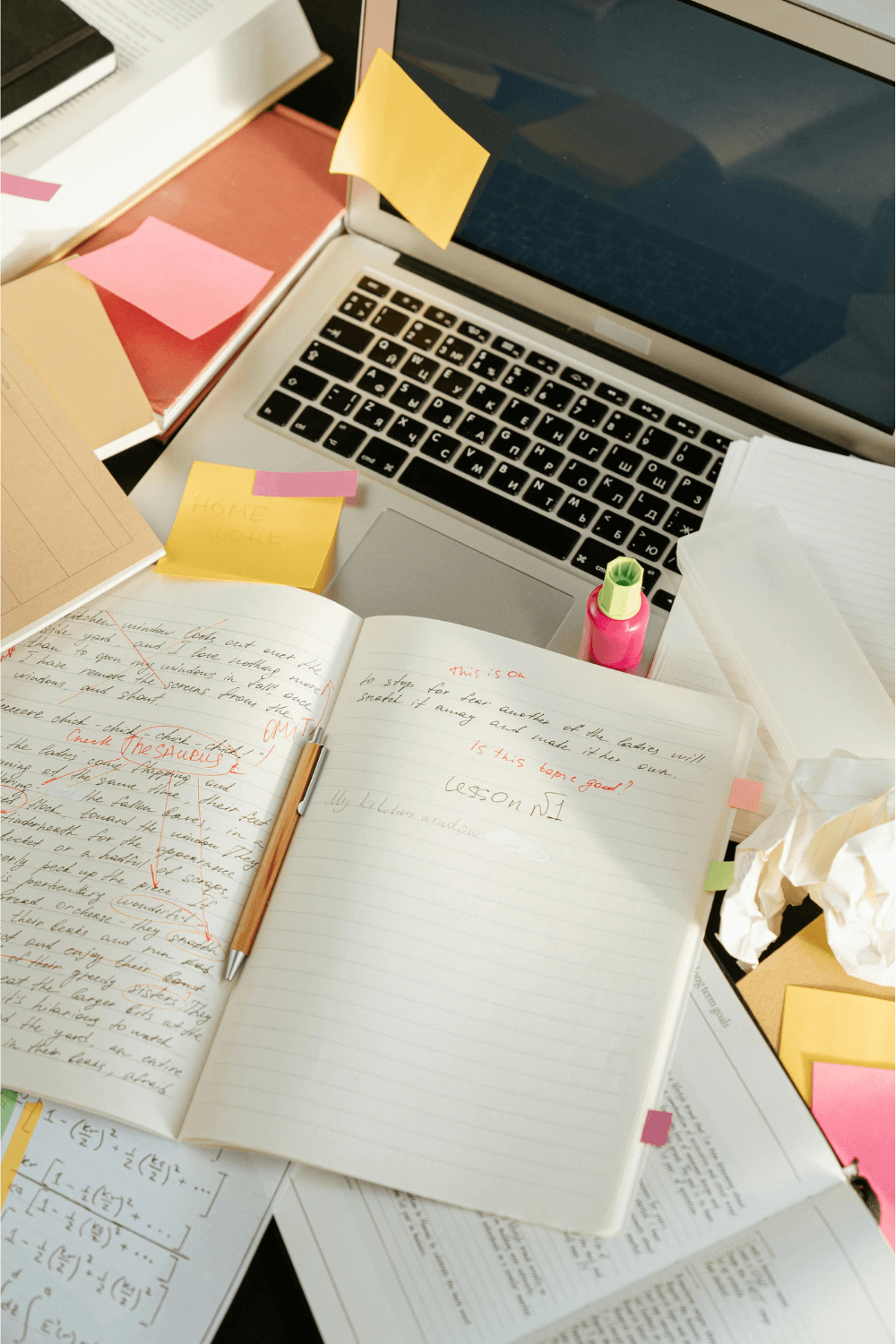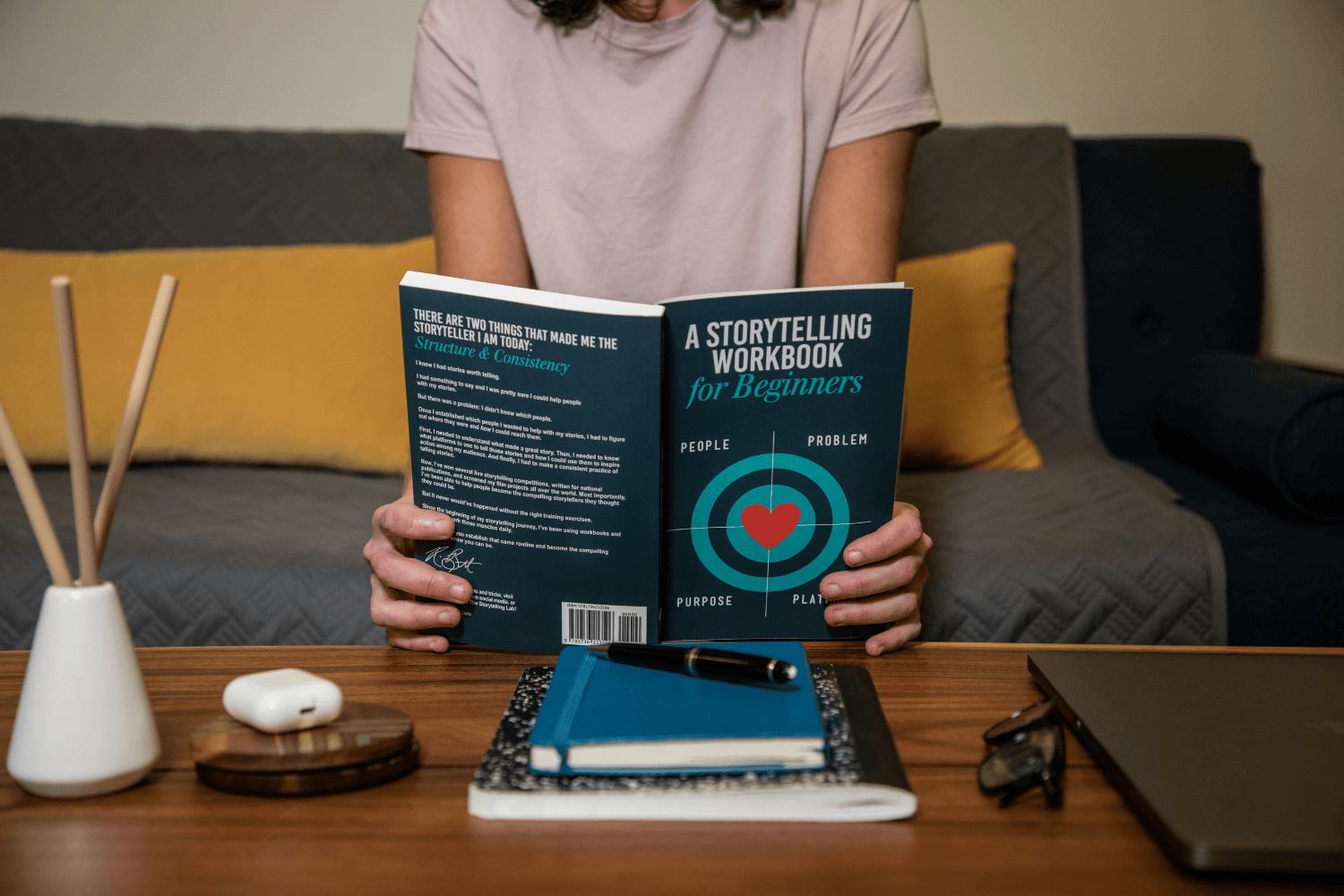Using AI in Portfolio Work (Without Losing the Plot)
Discover how to use AI tools to support your creative portfolio—without sacrificing originality, intent, or your unique voice. Stay in control while letting tech do the grunt work.

AI is changing the creative world, and that includes how portfolios are built, refined, and judged. From ChatGPT, to Midjourney to Firefly, to DALL·E, the tools are powerful. But the most powerful thing is how you choose to use them.
At book180, we don’t believe AI replaces original thinking. We do believe it can be an incredible asset for young creatives, especially when used with intent, curiosity, and a sharp eye. It’s not about letting a tool think for you. It’s about using it to think alongside you.
Whether you’re crafting your first case study or taking your final portfolio to the next level, here’s how we encourage students to use AI in ways that support their creative growth.
1. Use ChatGPT to Reverse-Engineer Great Work
If you want to get better at writing case studies and insight statements, study the best ads and dig beneath the surface.
Bookmark your favorite commercials, ads, campaigns, or award-winning work, then ask ChatGPT to unpack the strategy behind the work. What might the insight have been? What problem was it solving? How was the tone crafted to connect with a specific audience?
This practice helps you understand not just what made the work great, but why it worked on a deeper level.
Pro Tip: Add context when you prompt. For example, “Can you explain the possible insight and audience strategy behind this ad for [Brand]? I’m trying to learn how to write strategy statements like a junior copywriter.”
2. Pressure-Test Your Campaigns with a Digital Devil’s Advocate
One of the smartest ways to use AI is as your toughest critic and instructor.
Before putting a campaign idea as a final piece in your advertising portfolio, ask ChatGPT to poke holes in it. Does it make assumptions about the audience? Could it unintentionally exclude a key demographic? Is the tone clear and authentic?
Try prompts like, “What would a creative director push back on in this concept?” or “How could this campaign be misunderstood or backfire?”
This isn’t about watering down your work. It’s about strengthening it so it holds up under scrutiny. The best creative ideas are the ones that anticipate feedback and respond to it.
3. Build a Better Creative Process Through AI Prompts
Staring at a blank screen is real. And while AI feels new, the need for creative jumpstarts isn’t. For decades, writers and art directors have turned to the thesaurus, Idiom.com, rhyme books, and case study reels to shake loose a great insight. ChatGPT is simply the 2025 version of that same impulse: a creative tool designed to help you get unstuck.
Use AI to brainstorm rough headlines, campaign angles, or unexpected brand partnerships. You can even prompt for tonal variations like, serious, witty, or cinematic, to explore different creative directions.
The key is to treat it like a springboard, not a finish line. Let the ideas fly, then rewrite, reshape, and make them your own. You still need taste, judgment, and craft. AI just helps you move faster from “what if” to “aha.”
Try This Prompt:
“I’m working on a campaign for [Brand] around [Problem]. Can you give me 10 unexpected uses for [Product.]
Then take the most compelling responses and rework them. Just like flipping through a book of idioms or a Cannes archive, you’re not copying — you’re catching a spark.

4. Use AI to Understand Cultural Context, Not Mimic It
Cultural fluency is essential in advertising. If you’re creating work for a group you’re not part of, you need to tread carefully.
AI can help by providing historical context, background on slang or symbols, or summaries of relevant trends. It’s a helpful starting point if you’re trying to understand how something functions within a culture or subculture.
But don’t stop with AI. Validate what you learn with real articles, expert sources, and people who live that experience. AI helps you ask better questions, but it doesn’t replace authentic research.
5. Using AI Image & Video Generation to Elevate Your Layouts
AI image and video tools like Midjourney, Runway, Pika, and DALL·E are powerful creative assistants when used with intention. They're not a replacement for your ideas or your design sensibility, but they can bring your vision to life more accurately and convincingly, especially when you're building speculative or concept-driven work. Your portfolio should reflect your own design sensibility, but use AI to support your vision, not replace it.
So a few of our biggest art director portfolio tips:
- Realistic Mockups for Guerrilla or OOH Ideas
Need to show your campaign projected onto the side of a bus or subway entrance? Instead of settling for a Photoshop render that feels off-scale or generic, AI tools can generate photo-realistic environments that feel immersive and true to your concept.
You’re not using AI to come up with the idea. You’re using it to help visualize how your idea would exist in the world.
- Product Interaction Shots You Can’t Stage
Need a specific image—like a person holding a product at a particular angle, or someone interacting with a product that doesn’t exist yet?
With image generators, you can create those hyper-specific moments that stock photography just doesn’t deliver. And if you choose the layout, typography, and control the brand aesthetic, you’re still in creative control.
- Stylized B-Roll for Spec Campaigns
Want to show what your product might have looked like in the hands of someone 200 years ago, or dramatize a "future use case" of your concept? Tools like Runway or Pika can help you simulate short video clips or animated assets for proof-of-concept storytelling. You’re using AI not to fabricate content, but to visualize your strategic thinking in a more engaging way.
6. Ownership and Copyright
- The legal gray area: Most AI-generated content can’t be copyrighted by the user, because the content wasn’t created solely by a human.
- What that means for portfolios: If your visuals are entirely AI-generated without significant human input or transformation, you may not be able to claim legal ownership. That can be problematic if you repurpose the work for commercial use or pitch it in a client scenario.
- Best practice: Use AI as a tool for ideation, comping, layout assistance, or visual exploration—not as the final product. If AI helped generate elements of your piece, but you concepted it, directed it, and refined it, you’re on much safer ground.

7. Give credit when it’s due
Ethical expectation: Transparency is part of creative integrity. If you use Midjourney for image generation, include a quick note in your case study. Industry professionals appreciate honesty, and they aren’t looking to penalize you for using tools. They want to see that you’re thoughtful and clear about your process.Remember, many agencies use AI too. Being transparent shows maturity and awareness of how these tools fit into modern workflows.
Example disclaimer for a case study:
"Visuals generated in Midjourney to support layout comps. Concept and copywriting by me."
8. Soon, You Might Be Writing To or Through AI
Learning about and embracing AI isn’t just a productivity hack—it’s a creative survival skill. The tools you’re experimenting with today (like ChatGPT, Claude, or DALL·E) are the same platforms shaping how brands, products, and people connect tomorrow.
Why does this matter for your career? Because AI isn’t just behind the scenes anymore. It’s becoming the first line of communication between brands and audiences. Meaning: creatives will increasingly be designing content for, with, and through AI interfaces.
Think of it this way:
- When someone searches for “best running shoes for flat feet,” it’s no longer a traditional Google search that drives behavior—it’s the AI assistant’s answer.
- When someone books a trip through a generative travel concierge and says they want a hotel “that feels cool, creative, and safe for solo women travelers,” it’s your product messaging and brand tone that determine whether your client’s hotel gets recommended.
- When customers troubleshoot with a chatbot, it's your UX copy that makes the experience feel calm, clear, and human, not robotic.
So much of what we do in advertising is about framing the message and shaping the story. Increasingly, that means understanding how to craft content that works with AI systems and shows up well inside of them.
Getting comfortable with AI tools now means you'll be ahead of the curve, and not just with using the platforms, but with understanding how they process, translate, and elevate your creative work. Whether you’re a copywriter fine-tuning tone, or an art director generating mockups of futuristic products, knowing how AI interprets inputs and outputs gives you a major strategic edge.
This isn’t about replacing human creativity. It’s about making sure your creativity still lands when a machine is the middleman.
Final Thoughts
When it comes to AI portfolio development, AI tools can’t replicate your voice, your thinking, or your personal taste. But they can help you:
- Sharpen your strategy
- Draft and refine case studies
- Build visual concepts faster
- Explore alternative ideas
- Push past creative blocks
- Learn from top-tier work
- Future-proofing your skills and portfolio
AI is just a tool. The core of any strong portfolio is your creative thinking. That means your original ideas, your storytelling, your ability to solve problems in ways that surprise and connect.
Use the tools. Be curious. Test and tweak your work. But don’t let AI run the show. You are the creative director. Let the technology be your assistant, not your replacement.
Your ideas matter. Let’s make sure your portfolio shows the world exactly what you can do.
And if you want smart, supportive guidance while you build your book,book180 is here for you. We’re proud to be the first online portfolio schools to teach AI integration in a way that’s both practical and creatively responsible, helping students integrate AI into their portfolio process in ways that reflect real industry expectations. You won’t find portfolios built entirely with AI here, but you will find students using it to enhance their ideas and communicate them more clearly. Want to learn more about AI and how to use it to elevate your skills? We’re hosting a free, online webinar in partnership with the One Club Miami chapter on August 7th, 2025. 4 industry professionals at the forefront of AI will be there to chat ethics, tips and tools, ways to integrate AI into your process, and how AI will impact future creative skills and work flows.







